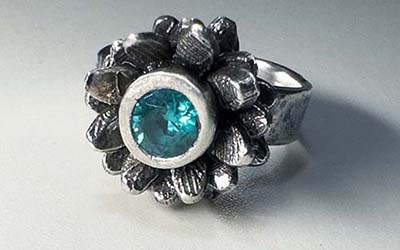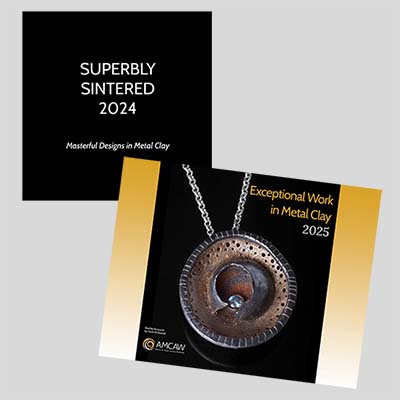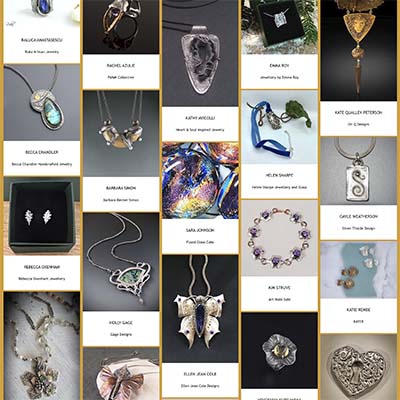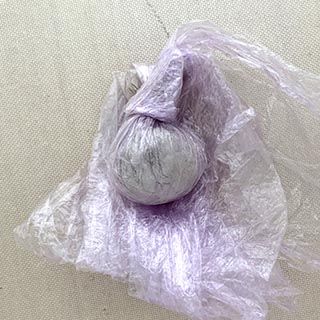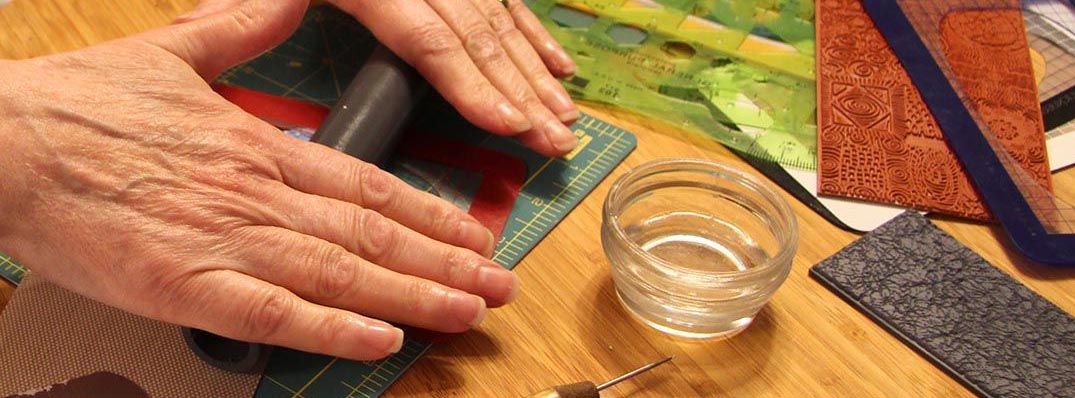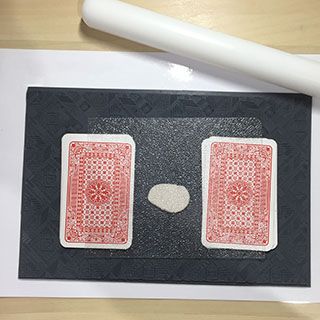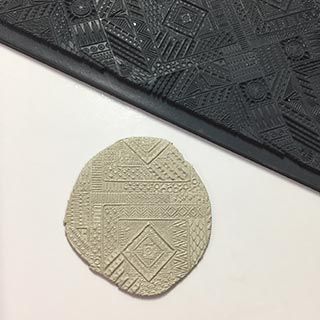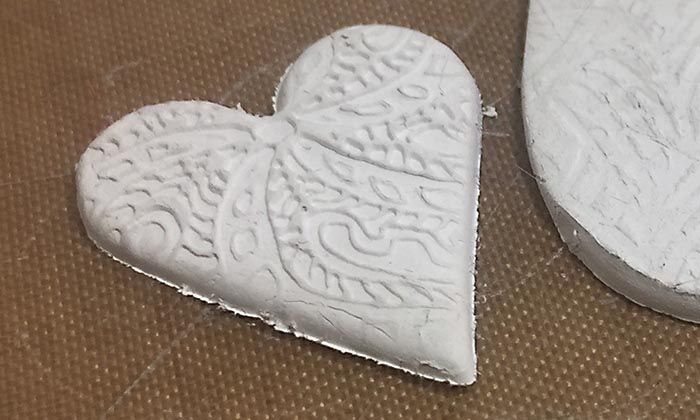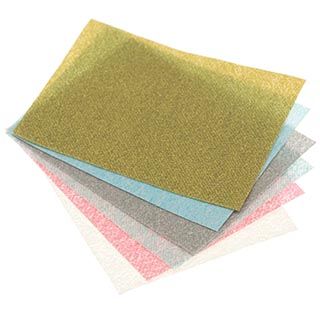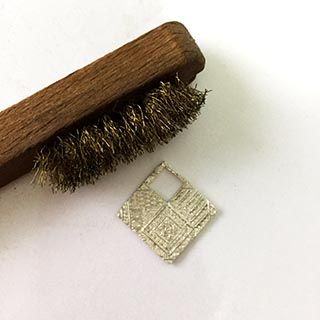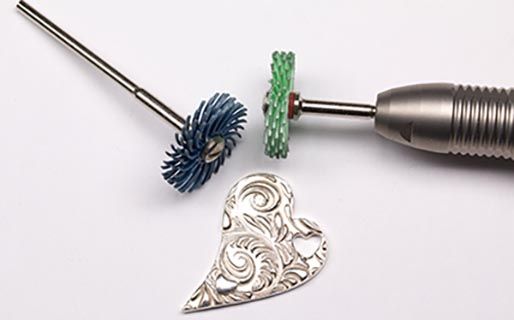Metal clay is most often rolled into flat slabs or sheets, textured, and cut into shapes to make individual jewelry elements.
A round roller will create a flat slab of metal clay. Most rollers sold through metal clay vendors are acrylic or another type of hard plastic, but you can also make your own with a 6” piece of PVC pipe in any diameter from ¾” to 2”. Tip: The larger the diameter of the roller, the smoother the surface of the clay will be.
Pressing firmly – either roll with hands open in one smooth motion from top to bottom, or place the roller in the center of the clay and roll towards the top and then to the bottom. Rolling many times causes ridges and unclean textures. If enough pressure is used, only one repetition of these movements should be necessary.
Over-rolling is not only un-necessary, it will dry the clay. Always roll off the edge of the clay so you don’t create a thickened area at the end of the slab. Tip: Standing while rolling will allow you to place more pressure on the roller.
Spacers, slats, thickness guides, and thickness frames are all names used for the tools that help create a consistently level slab of clay. The original metal clay spacers were playing cards; therefore, commercially made spacers correspond to playing card thicknesses. Slabs are rolled to specific thicknesses depending on the item being made, the preference of the maker, the method of construction, the function of the piece, and other considerations.
To make your own playing card spacers, use double-sided tape to attach cards to the back of a face card that denotes the thickness. Attach one card to the back of a 2, two cards to the back of a 3, three cards to the back of a 4, and so on. Because of the addition of the tape to homemade spacers, they will always be a little less exact than commercially manufactured spacers, but thickness is arbitrary, and a slight difference doesn’t matter in the long run. Using 2 card thick, home-made playing cards will work as well as using 2 cards thick, commercially made slats/spacers/guides/frames.


